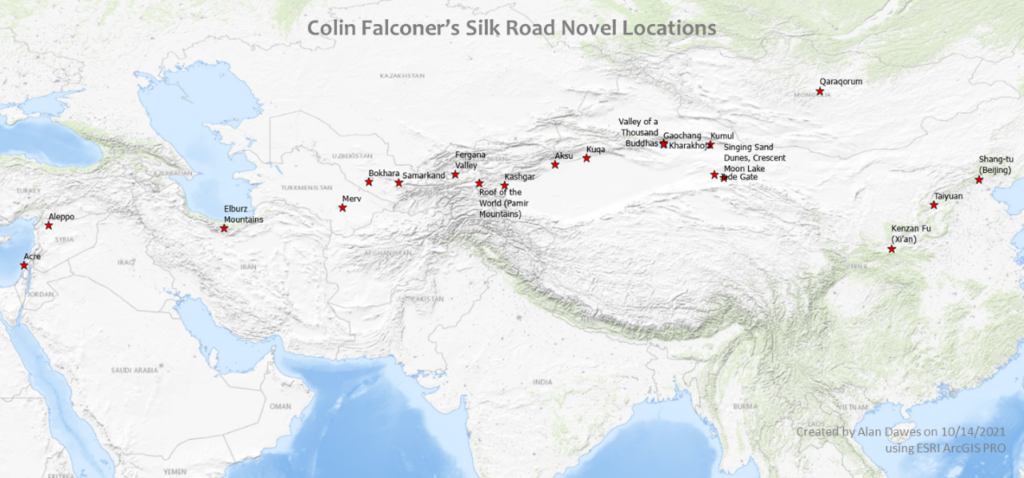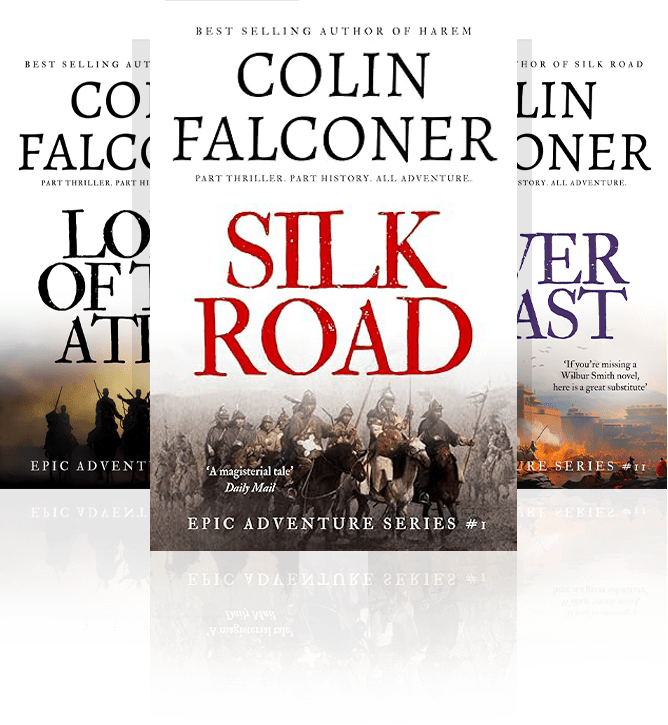In the steps of Marco Polo
The Silk Road, as it is called, was an intricate network of trade routes linking Asia and the western world. It came into being with the expansion of the Han Empire into Central Asia around 100 BC, with the Parthian Empire forming a land bridge to the Roman Empire and the coast of East Africa.
It not only made possible a flourishing trade in silk, porcelain, horses, gold and tea, but also facilitated the exchange of religious ideas such as Buddhism, Islam and Christianity. Later, it was also responsible for the spread of the bubonic plague.
Few travellers in the Middle Ages journeyed the entire length of the Silk Road as Josseran and William do in my novel. The distance was far too great, and it was too dangerous.
Back then, it would have been akin to space travel.
Even the merchants who plied their trade along the ancient route did not travel more than a few hundred miles. Most went part of the way and then onsold their goods to other merchants. In simplistic terms, the silk route economy was a transcontinental game of Pass the Parcel.
There was no single Silk Road. It wasn’t a highway, but a spiderweb of paths and trails.
There were two different routes north and south of the great desert of the Taklimakan, as well as the so called Tea Horse Road that followed a series of caravan trails through Yunnan and Sichuan and ended in India.
There was also a maritime route – if you’ve read Ends of the Earth, you’ll know all about that.
In Silk Road I took William and Josseran along the northern route, following in the footsteps of Marco Polo. They travelled across Persia, which was then still devastated from the depredations of Genghis Khan forty years before.
They passed through the fabled cities of Bokhara and Samarkand before crossing the Pamir Mountains – known locally as the Roof of the World.
Then they skirted north of the terrible Taklimakan – which, roughly translated from the local Uyghur dialect, means ‘go in and you won’t go out’.
By the time they had done all that, they were still only a little over two thirds of the way to the great Kahn’s capital at Shang-tu (Xanadu).
My thanks and acknowledgment to reader Alan Dawes for the excellent map accompanying this blog. After reading Silk Road, Alan mapped the route and all the places mentioned in the book.
I’m sure readers will find it interesting.

FOOTNOTE: If you love epic adventure and are intrigued by the Silk Road, you may be interested in the story of Catholic emissary William of Rubruck.
He travelled the Silk Road with my fictional Templar knight, Josseran, to meet Kublai Khan to try to convert the Mongols to Christianity.
I tell this story in my bestselling historical adventure thriller, Silk Road.






